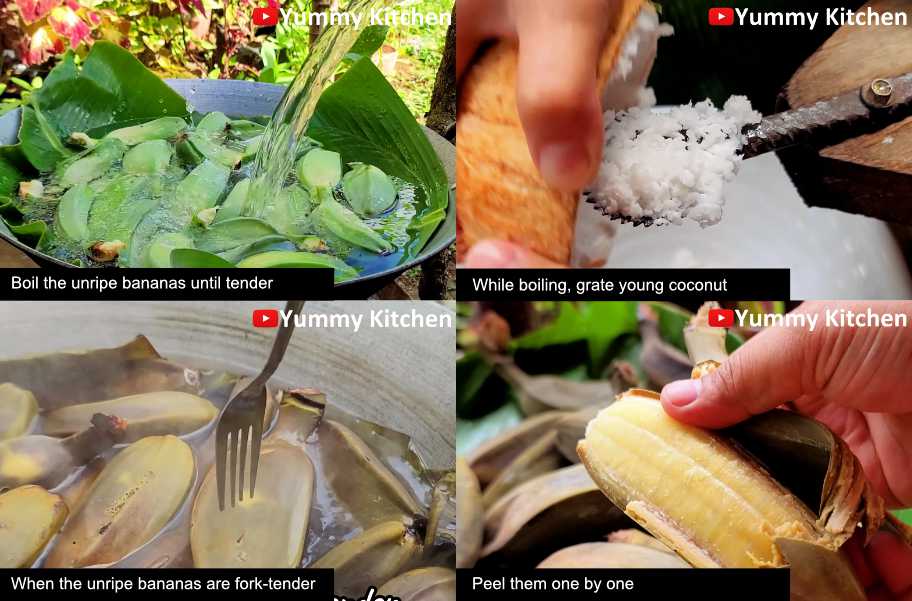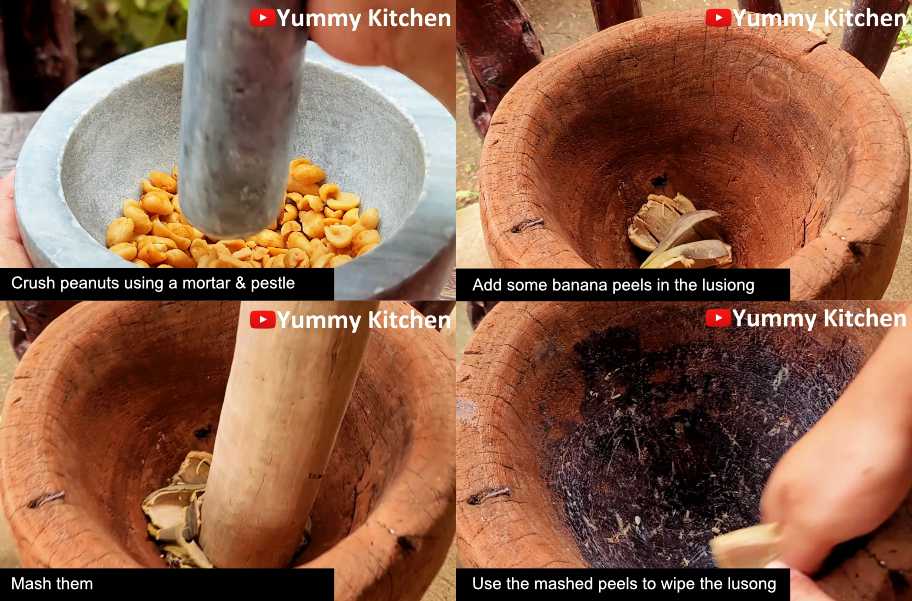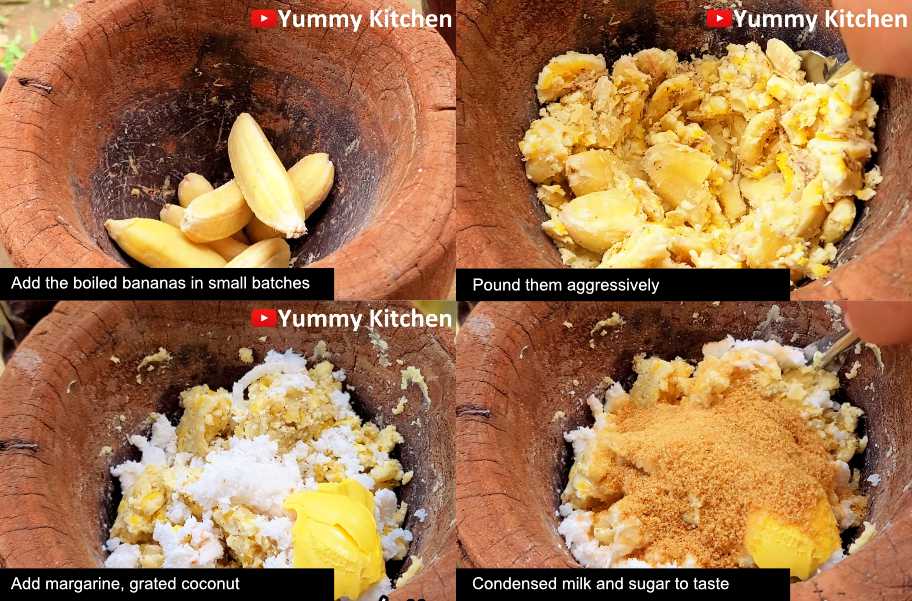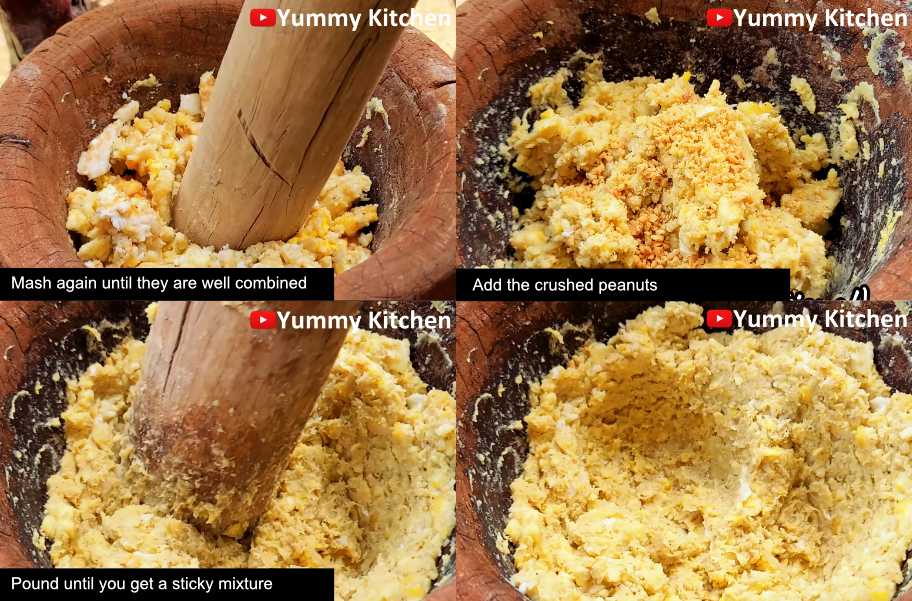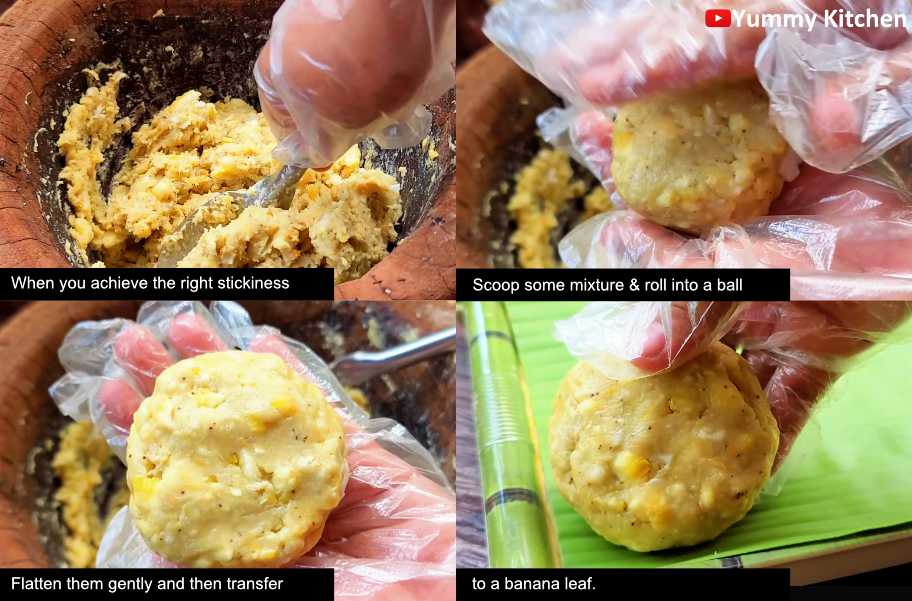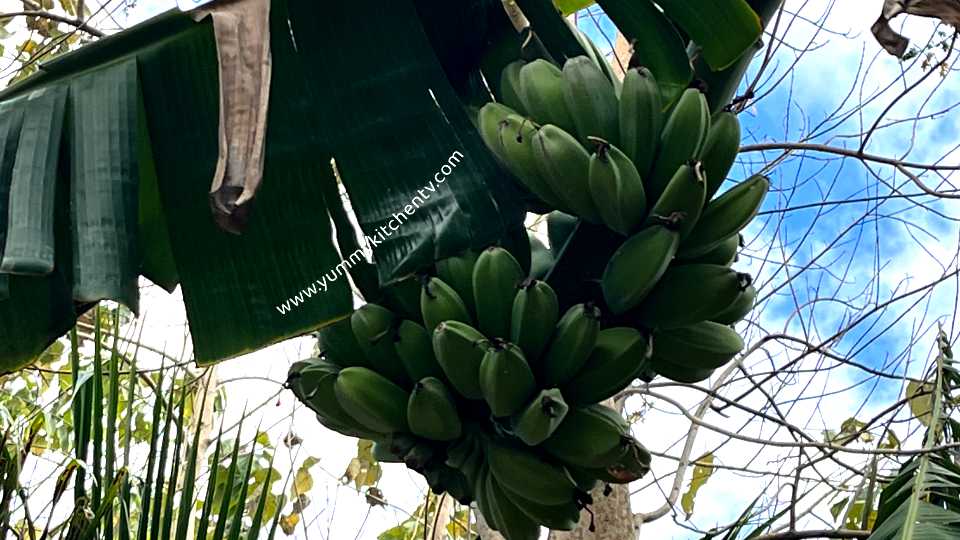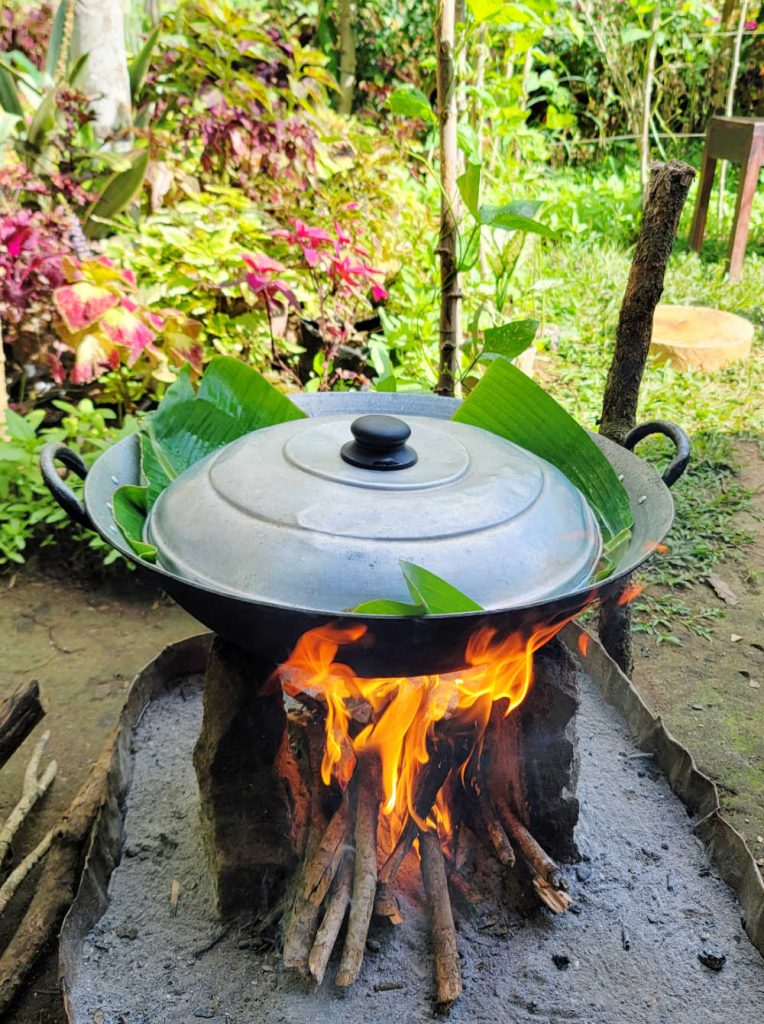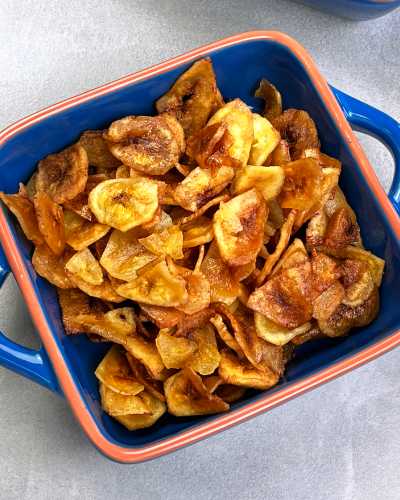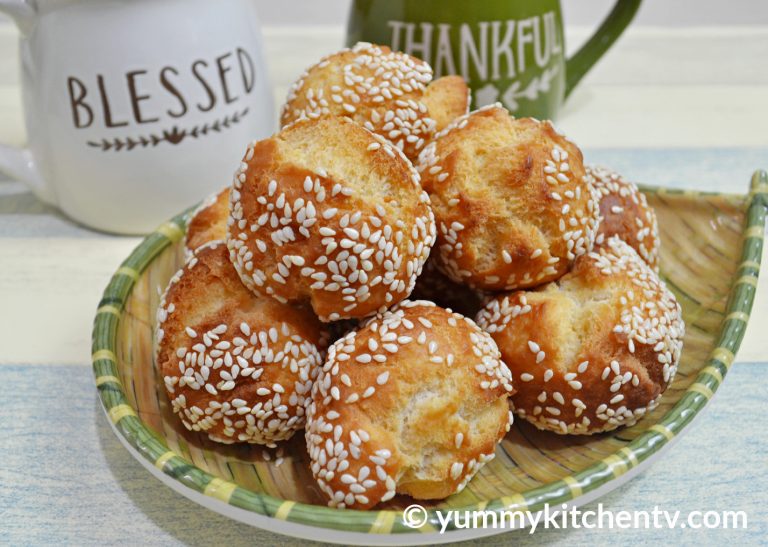Nilupak na Saging – A Classic Filipino Merienda ( Treat )
Nilupak na Saging is a well loved Filipino ‘kakanin’ or rice based delicacy that bring the nostalgia in every bite! Recreate your childhood favorite, this satifyingly sweet, creamy, tropical goodness is sure to bring delight in every bite !
How to cook Nilupak na Saging
Ingredients
- 15 to 20 unripe saba bananas
- ½ cup condensed milk
- 1 piece grated coconut
- 2 to 3 tablespoons margarine
- Sugar to taste
- 1 to 2 tablespoons ground peanuts
Directions
1. Boil the unripe bananas until tender. While boiling, grate young coconut. Check if the unripe bananas are already fork-tender. Once slightly cooled, peel them one by one.
2. Crush roasted peanuts using mortar and pestle. Grab the lusong. Add some of the banana peels and then mash them. Use the mashed peels to wipe the lusong.
3. Add the boiled bananas in small batches and then pound them aggressively. Add some margarine or butter, grated coconut, condensed milk and sugar to taste (I used brown sugar).
4. Mash again until they are well combined. Add the crushed peanuts and then pound until you get a sticky mixture.
5. When you achieve the right stickiness, scoop some of the mixture and roll into a ball. Flatten them gently and then transfer to a banana leaf. Do this with the rest of the mixture.
6. Brush each of the nilupak na saging with margarine on top. Sprinkle some ground peanuts and grated coconut. Serve the nilupak na saging together with your afternoon tea or coffee. Enjoy!
Went to the province and helped with the making of the nilupak since there were many unriped saba bananas. The lusong was actually two and I am honored to have experienced to use one. I got tired after I think 30 mins but the locals there are very strong
I went to the province again to sort of “unwind”. I have been staying in the city for a while and felt the need for fresh air. I just got in there at the right moment since they will be making some fresh nilupak na saging. I have been a fan of the nilupak na saging ever since but have not yet tried to make one.
In making nilupak na saging, you need what they call the “lusong”. Basically it’s a gigantic mortar and pestle. Aside from making nilupak, the lusong is also used in processing harvested rice, to separate the husk and the grains and for pounding cacao seeds to separate the kernels from the shells.
What I love in the province is that everything is freshly harvested! Even the unripe saba bananas were harvested right in front of my eyes (of course I helped too!). It took a lot of hours from the harvesting time until the time we were able to enjoy the nilupak na saging. Every pagod is super worth it as we take our first bite of the nilupak!
If you are interested in making nilupak na saging, make sure you are ready. (HAHAHA). Read and follow the simple steps below! Happy cooking!
What are Saba Bananas ?
Saba Bananas are a popular variety of bananas in Asia, and especially the Philippines. A staple livelihood crop that is resistant to many diseases and droughts, can thrive in humid and lowland regions, has a good about of nutritional value, grows up to 20 feet, and are known for being thick and starchy in texture, has a sweet taste, and is often eaten raw, grilled, broiled, fried, and many more. While more commonly eaten in Traditional and Modern Filipino desserts, these can also be found in savory sautés, soups, and stews.
Key Features:
- Scientific Name : Musa acuminata x balbisiana (ABB Group)
- Origin : Philippines, but still widely grown around Southeast Asia.
- Appearance: a large, thick, blocky-slightly angular fruit. Unripe the peel has a green hue, that slowly turns bright to dull yellow once it ripens.
- Texture: it’s starchy and very firm when unripe, softer when ripe.
- Taste: it’s mildly sweet in flavor and quite starchy. the sweetness is evn more noticeable when cooked.
- Culinary Uses: The meat can be eaten raw. While the peel can also be edible, it has to be cooked until soft and tender.
- Popularly used in recipes like: Banana-cue, Turon, Nilagang Saging ( saba bananas steamed or broiled with palm sugar or very dark brown sugar), Saba chips, sweetened to be used as a halo-halo topper or over milk shaved ice, sautéed with meats in a savory sauce like Pork Estofado, or broiled in stews like Pochero.
- Health Benefits : These are high in carbohydrates, a great source of fiber, Vitamin C, Vitamin B6, Potassium, and Iron.
Nilupak na Saging Ingredients
- Saba bananas – our main ingredient, an sweeter alternative to kamote ( sweet potatoes ).
- Condensed milk – adds sweetness and creaminess, helps bind all the ingredients together.
- Grated coconut – for added taste and aroma.
- Margarine – or butter, gives the dish a nice richness and even slightly velvety feel.
- Sugar – to taste
- Peanuts – to add nuttiness and a nice crunchy texture.
Why try this recipe ?
Disclaimer: Preparing this dish is going to be super tiring. Make sure you do stretching beforehand! (just kidding!)
The nilupak na saging starts with harvesting unripe saba bananas. Yes, unripe, the very green ones. If you have no banana plant in your backyard, unripe saba bananas are also available at the market.
Boil the bananas unpeeled. The bananas are super firm and very hard to peel when unripe. Rinse the bananas first just to make sure they are clean before boiling. After boiling, peeling will be much easier.
To prepare the lusong, wipe it with some pounded banana peels. This is also to prevent the nilupak from sticking at the sides of the lusong.
It’s pounding time! Stretch a bit more before you start pounding. The lusong is very big that you need two hands to hold the “pang bayo” or the pestle. I was the one who started the pounding and only lasted for around 30 minutes. When I passed the lusong to the local, they were really strong and finished the nilupak in around 20 minutes! You’ll really see who’s a pro and who’s not!
Since I’m too tired, I let the locals do the pounding and helped in rolling them into bite sized portions. The nilupak na saging really goes best with some margarine, ground peanuts and ground coconut. It is never everyday that you experience a freshly made nilupak na saging! Yum! This treat really goes well with some hot coffee.
Try out Other Yummy Banana Recipes :
This Nilupak na Saging Recipe differs from the traditional Kamoteng kahoy ( cassava ) dish since it uses saba bananas, with the usual nilupak based ingredients like condensed milk, grated coconut, margarine, and sugar. It takes a lot of muscle power and time to make since traditionally, it needs to be pounded using a lusong (wooden mortar). A true labor of love, this delightful treat is definitely worth the effort (pagod)!
Nilupak na Saging Recipe (TAGALOG)
Mga Sangkap:
- 15 – 20 piraso ng hilaw na saging na saba
- ½ tasa ng condensed milk
- 1 piraso ng buko (grated)
- 2 – 3 kutsara ng margarine
- asukal
- 1 – 2 kutsara ng mani (dinurog)
Paano Gawin:
- Pakuluan ang mga saging na sabahanggang lumambot (huwag munang balatan).
- Magharvest ng isang piraso ng buko at i-grate ang niyog nito.
- Tusukin ang mga saging para malaman kung malambot na. Kapag malambot na, balatan ang mga ito isa isa.
- Tustahin ang mga mani at dikdikin.
- Ihanda ang lusong. Maglagay ng konting balat ng saging at durugin ito. Gamitin ang mga balat para mapunasan ang lusong.
- Ilagay ang mga pinakuluang saging at durugin gamit ang lusong.
- Maglagay ng margarine (o butter), niyog, condensed milk at asukal (brown sugar). Durugin ulit ang mga saging para humalo ang mga ito. Ilagay ang dinurog na mani at durugin hanggang maging sticky ang nilupak.
- Kapag sticky na, alisin na ito sa lusong. Kumuha ng 1 scoop ng mixture at bilugin gamit ang mga kamay. Medyo iflatten ito bago ipatong sa dahon ng saging. Gawin ito sa iba pang nilupak mixture.
- Ibrush ng margarine ang bawat nilupak. Budburan ito ng konting durog na mani at niyog.
- Ihain ang nilupak kasama ng iyong kape o tsaa. Enjoy!




